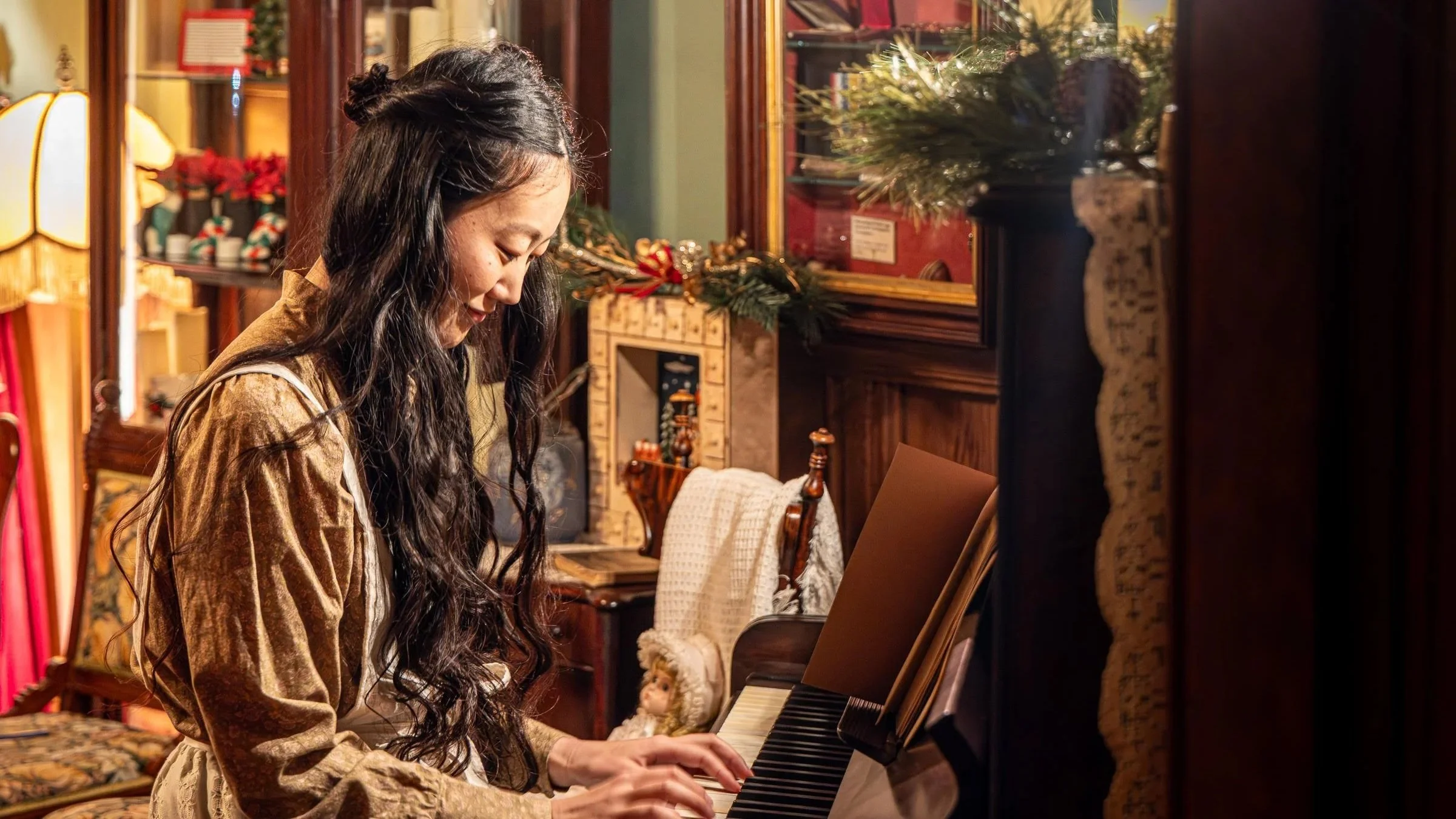Stir Cheat Sheet: 5 facts on the one-hander La détresse et l'enchantement
The solo show is a theatrical montage of the memoirs of celebrated, late Franco-Manitoban author Gabrielle Roy
Marie-Thérèse Fortin in La Détresse et l’enchantement. Photo by Yves Renaud.
Théâtre la Seizième presents La détresse et l'enchantement, based on text by Gabrielle Roy, by Trois Tristes Tigres, created with Théâtre du Trident and Théâtre du Nouveau Monde, April 21 to 23 at 8 pm at the York Theatre. In French with English surtitles on April 21 and 23. An artist talkback takes place in French on April 22.
IN LA DETRESSE ET l'enchantement, performer Marie-Thérèse Fortin (who developed the solo theatre piece with writer/director Olivier Kemeid) brings to life Gabrielle Roy, one of the greatest writers the country has known. Here are a few things to know before you catch the show.
The youngest of 11 children, Franco-Manitoban writer Gabrielle Roy worked as a teacher before turning her attention to literature and theatre. She travelled to France and England to study drama. After two years overseas, she decided to devote herself to writing, moving to Montreal, where she became a freelance journalist for La Revue Moderne and Le Bulletin des agriculteurs. Her income was so meagre at the time that, while living in a rooming house, she would roam the streets, walking for hours on end to keep warm.
Roy’s debut novel, 1945’s Bonheur d'occasion—which criticized the condition of workers and the underprivileged at the beginning of World War II—was a massive success. Translated as The Tin Flute and using the language of joual to describe urban life in raw detail, the book sold more than a million copies, earned a Governor General's Award, and became a Literary Guild of America selection. It made Roy a recipient of the Lorne Pierce Medal of the Royal Society of Canada and the first Canadian winner of the prestigious French Prix Fémina. The novel was made into a motion picture in 1983.
Roy married a doctor named Marcel Carbotte and subsequently left for France anew, this time for a three-year period, later settling in Quebec City. In 1957, she bought a cottage in Petite-Rivière-Saint-François, Charlevoix County, where she did most of her writing in between travels across Canada, the U.S., and Europe. Having lived with severe bouts of depression and a preference for solitude, Roy is widely considered to be one of the greatest contemporary writers on the human condition, delving into everything from artists’ angst to the plight of Indigenous people. Her works include Alexandre Chenevert, 1954; La montagne secrète, 1961; and La rivière sans repos, 1970. La détresse et l'enchantement (translated by Patricia Claxton as Enchantment and Sorrow: The Autobiography of Gabrielle Roy) was published posthumously in 1984.
Performer Marie-Thérèse Fortin and writer/director Olivier Kemeid developed La Détresse et l’Enchantement, a theatrical montage of Roy’s autobiography, to celebrate and honour the late writer. The idea for such a production first came to Fortin’s mind over three decades ago.
“Reading La Détresse et l’Enchantement was a real shock,” Fortin said in an interview with Théâtre la Seizième. “I had read a really good article on her autobiography, and I loved the title, it stuck with me. I was a young performer coming out of theatre school when I started reading her book and it spoke to me. It spoke to me because I recognized the stories of my family, I could see the characters she talked about. The voice of Gabrielle Roy, her way of telling stories, of bringing characters to life, of naming the emotion, the sorrow and the enchantment that lived in her, it all really connected with me. I think that’s the case with all of Gabrielle Roy’s readers. She has the strength as a writer to know how to reach people, to articulate an emotion and a journey; her way of telling stories is formidable. What I didn’t know is that she had wanted to become a performer, she became involved with productions, she had acted, and seriously thought about training as a professional actor in England. I find that I can sense that in her style of writing, in her way of telling stories, and it is this theatrical aspect that I could see coming through the writing, that made me want to bring that voice to the stage. Her voice felt alive, a voice that could express itself on a stage.”
A Chevalier of the Ordre des Arts et des Lettres de la France, Fortin is a graduate of the Conservatoire d’art dramatique du Québec and a prominent figure in French-Canadian film and television who has won several Prix Gémeaux (which honour Québec’s TV industry).
More information is at seizieme.ca/.












